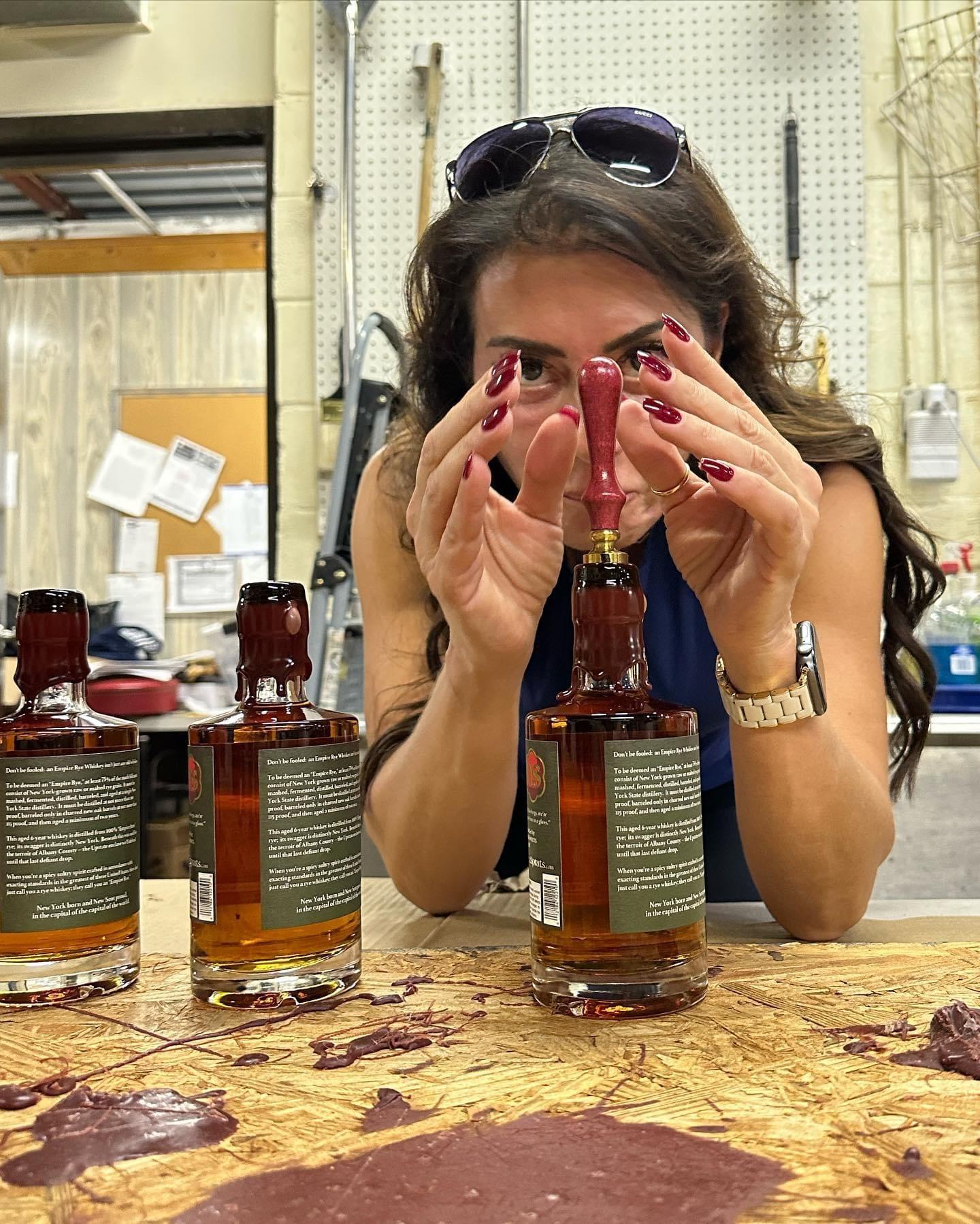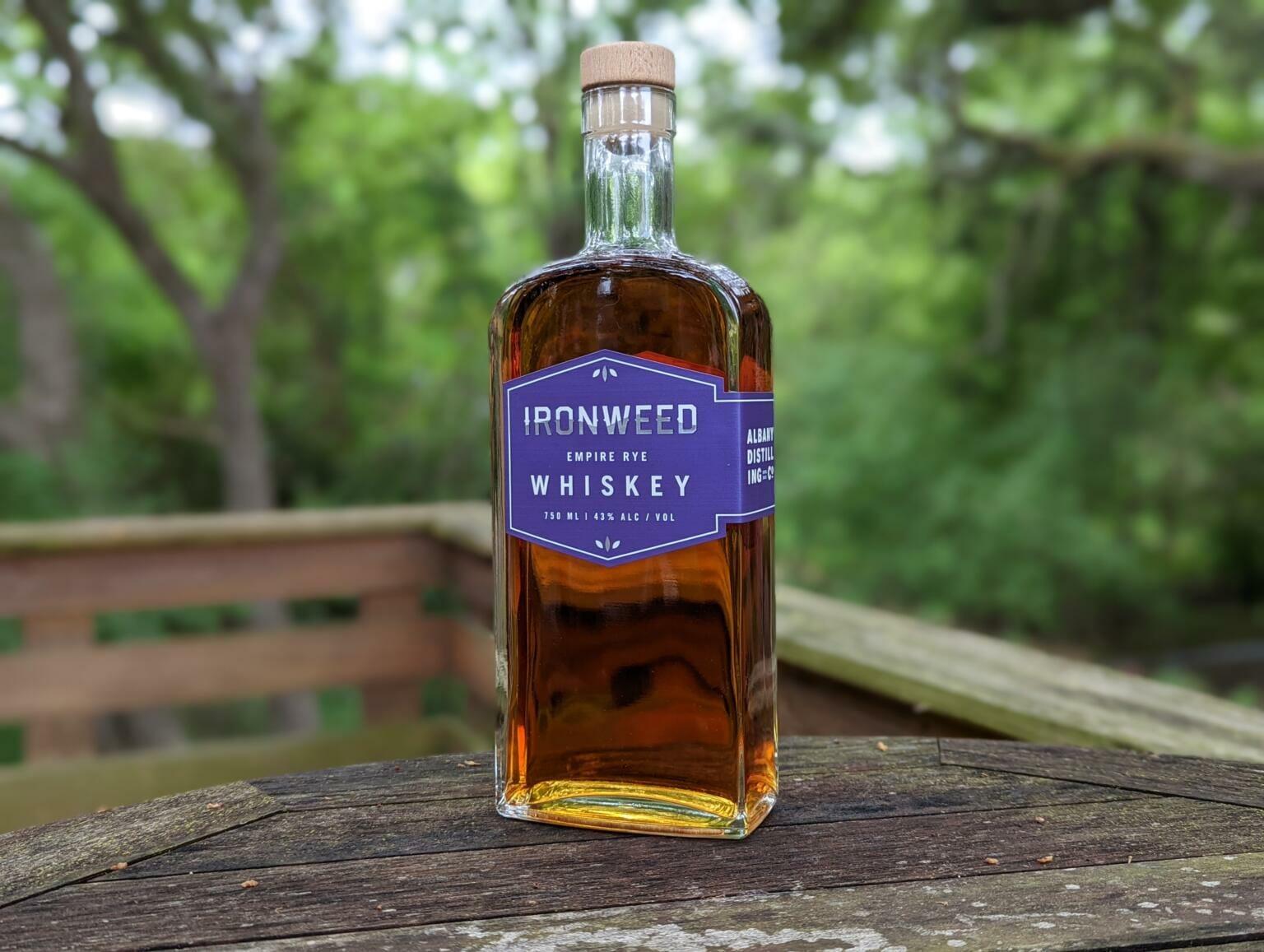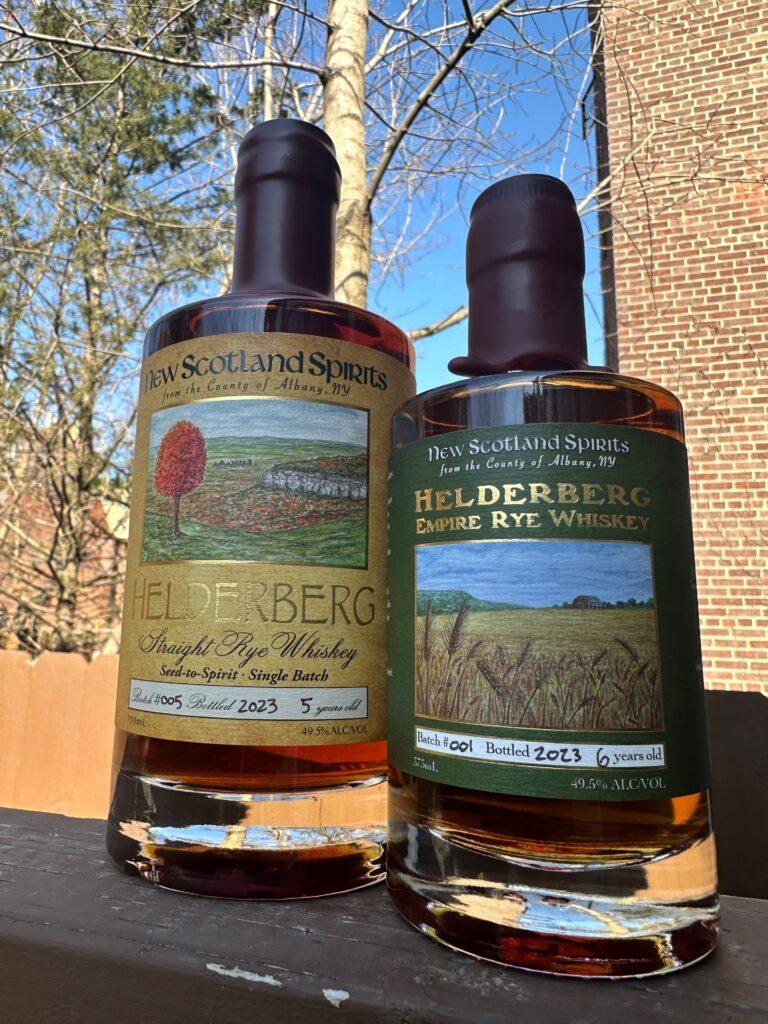John Curtin and Jesse Sommer, owners of the Albany Distilling Company and New Scotland Spirits, respectively, are two aspiring “whiskey magnates” situated here in Albany County. Sommer claims his company wouldn’t exist without the encouragement and technical assistance Curtin has provided him, but Curtin insists he’s just paying forward the support he once received from fellow distilling pioneers.
Yet both are bound by more than just regional and collegial affiliations; they are, most interestingly, producers of a radical spirit unique to New York State. It’s known as an “Empire Rye.”
History Made!
When Curtin founded the Albany Distilling Company (“ADCo”) in early 2011, he inherited a lofty title: proprietor of the Capital City’s first distillery since Prohibition. His early forays in New York’s nascent “craft spirits” industry had been enabled by the passage of the 2007 Farm Distillery Act, which dramatically reduced the costs and obstacles of small-scale liquor manufacturing (i.e., distilling). Back then, Curtin was figuring it out as he went along, given the total loss of any “institutional knowledge” following America’s disastrous Eighteenth Amendment social experiment.
“Prohibition destroyed what had been a robust distilling ecosystem [in New York],” Curtin says. “We were picking up the pieces three-quarters of a century later.”
Though not a farmer himself, supporting New York’s agricultural sector was Curtin’s animating objective. “We wanted to capitalize on the fruits of family farms. They’re one of [the state’s] richest legacies. Grain was harder to come by back then. Those early years were all about assembling a supply chain block-by-block.”

With each hurdle that he cleared, Curtin’s colleagues began to recognize him for his leadership in defining an emerging sector. Curtin won’t tell you that, of course, but Sommer insists it’s true.
“I still depend on him to interpret laws and regulations, connect me with partners, and answer my panicked calls,” Sommer says. “Even the State Liquor Authority picks his brain.”
Curtin demurs in the face of such praise. Deploying his signature modesty, he emphasizes that the Farm Bureau was enormously supportive of his efforts alongside two of New York State’s earliest entrants into the field: Tuthilltown Spirits Distillery and Harvest Spirits. “They held my hand as we tried to stand up what we hoped would become a statewide industry,” he says.
Today, Curtin is an officer of both the New York State Distillers Guild and the Capital Craft Beverage Trail (two organizations he was instrumental in establishing). But most relevant to this article, he’s also an active member the Empire Rye Whiskey Association, a nonprofit trade association with promotes its namesake spirit.
But wait… what’s bourbon?
Before we describe an Empire Rye whiskey, Sommer claims that we must first address the chip on his shoulder. Rattling off the regulatory citation by heart, Sommer told me to Google section 5.143 of the Code of Federal Regulations, subparagraph (c).
“That provision leaves nothing to the imagination, notwithstanding its convenient misapprehension by the Commonwealth of Kentucky.”
For Sommer, Empire Rye whiskies are a response to Kentucky bourbon distillers’ “willful campaign to confuse the consumer.” As an attorney himself, he’s “militant”—his word, not mine—about the law’s definition of “bourbon.”
“Bourbon whisky, rye whisky, wheat whisky, they all have to be distilled ‘at not more’ than 160 proof from a fermented mash of a minimum 51 percent of the specified grain and barreled at no more than 125 proof in charred new oak barrels.’ That’s it. There’s no other criteria. If it’s a rye whiskey, it’s a minimum 51 percent rye. And all bourbon means is ‘corn’. So, a bourbon whiskey must be distilled from a mash of at least 51 percent corn and aged in a charred new oak barrel.”
Notice what’s missing?
“The law says nothing about Kentucky,” Sommer declares. “There’s no reference to any regional characteristic or restriction. But that won’t stop the tour guides on the [Kentucky Bourbon] Trail from grandly insisting that it ‘ain’t bourbon if it ain’t Kentucky.’ Well, roger that. New York has Empire Rye.”
Curtin is less adversarial.
“I don’t think the Empire Rye initiative was supposed to be a response to bourbon,” he says of Sommer’s bombast. “It’s more a celebration of New York State’s critical legacy in whiskey distilling. Rye is New York’s native grain, it’s what distillers from the Colonial Era until Prohibition used in manufacturing the spirits New Yorkers imbibed.”
Still, he sees space for Sommer’s perspective. “But I suppose nothing is more quintessentially ‘New York’ than picking a fight, right?”
A Heightened Set of Standards
To secure the Empire Rye Whiskey Association’s “certification mark” and thereby signify that a whiskey is an Empire Rye, distillers must meet the following five standards:
(1) At least 75% of the mash bill must be New York State-grown rye grain that is (2) mashed, fermented, distilled, barreled and aged at a single New York State distillery, then (3) distilled to no more than 160 proof and (4) aged for a minimum of two years in charred, new oak barrels at (5) not more than 115 proof at time of entry.
According to Sommer, the intent of establishing these elevated criteria is to standardize a flavor profile among the Association’s thirty current members, thereby creating a distinctively New York product.
“You’ll recognize it when you taste it because of that common baseline,” Sommer says. “And there’s a method to all the madness. For example, lowering the spirit’s barrel entry proof beyond the standard 125 capitalizes on the Northeast’s seasonal fluctuations. As the barrel expands and contracts throughout the course of New York’s temperature extremes, the additional water content helps the spirit to better interact with the wood fibers. So that specific standard leverages our specific climate to give Empire Ryes a specific character.”


Still, the Association’s standards still leave plenty of room for innovation, experimentation, and individualization. For example, New Scotland Spirits offers an “Helderberg Empire Rye Whiskey” which was aged for six years (three times the Association’s two-year minimum) and distilled from a mash of 100% rye (vice 75%). And ADCo has invested a lot of time in pushing boundaries.
“The most rewarding thing [about an Empire Rye] is how much you can play with the unique flavor profile. Beyond our standard Ironweed Empire Rye, we released a barrel strength Empire Rye that enjoyed a secondary aging in cabernet casks. The interplay between the rye’s spice and the remnants of wine imbued our spirit with a layer of depth and complexity.”
Empire Rye Whiskies are almost always limited releases. That’s because the Association’s requirement that distillers use so much local grain requirement usually precludes mass production. Yet as New York’s craft distillers continue to refine their processes and expertise, the “small batch” nature of Empire Rye distilling is prompting an explosion of creativity. Sommer says this is why some New York whiskies are so more exciting than spirits emerging from states with a more robust distilling culture.
“Empire Ryes are, by definition and circumstance, truly rare,” he says. “But that’s cool if your favorite burgers are from McDonald’s.”
It’s comments like those which accentuate Sommer’s preference for Empire Ryes over wheat or bourbon whiskies. As he puts it:
“Thanks to the influence of the base grain, rye whiskies tend to be ‘spicier.’ Just like New Yorkers.”

